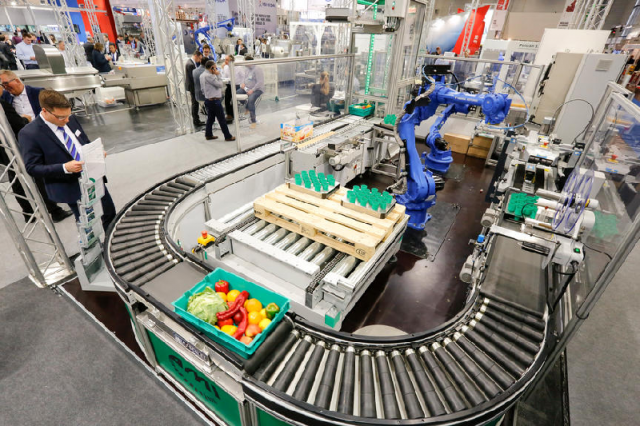Sustainability and environmental management play an important role in the food industry.
Nevertheless, regardless of how efficiently the machines work and how resource-friendly they produce, at the end of the day the manufacturers are still faced with the question: What to do with the waste materials that are left over? Anuga FoodTec from 20 to 23 March in Cologne holds answers in store for the visitors.
Trade exhibition Anuga FoodTec will be focusing on upcycling strategies and innovative methods for the recovery of materials from industrial by-products.
The show will be held from March 20 to 23, 2018 in Cologne, Germany.
Show organizer Koelnmesse says added value gained from waste products holds enormous potential for the food manufacturers.
On the one hand, the upcycling of by-products that arise in partly large volumes while processing vegetable and animal-based raw materials is resource-friendly and ecological.
On the other hand, the biomass contains a multitude of substances that can be implemented as ingredients for new foodstuffs.
Modern machinery and innovative methods for the recovery and upgrading of by-products are of interest here.
From waste material to a superfood
The initial starting point of every upcycling strategy is always the homogeneous separation of the arising vegetable and animal-based secondary raw materials.
Whey is a prime example of successful upcycling.
The former waste product that arises in large volumes during the production of curd cheese and cheese is turned into coveted ‘superfoods’ that no longer just create added value in fitness studios.
Thanks to its protein, vitamin and mineral content, the popular ingredient is in the meantime added to puddings, drinks and smoothies – and it is also implemented as a demineralized concentrate in baby food.
Numerous exhibitors at Anuga FoodTec will be presenting a wide spectrum of established technologies for the isolation of whey components and for the further processing of the recovered ingredients into liquid and powder products.
Separating methods isolate components
The membrane separation method plays a key role, especially ultrafiltration.
It allows the whey protein to be concentrated by up to 35%.
In protein isolates up to 90%, the whey is freed from the fat by means of microfiltration.
Lactose and minerals like calcium and phosphorus can be recovered from the permeate flow of the protein isolation by means of nanofiltration or reverse osmosis.
In this way, by combining dynamic filtration methods enriched products can be produced that contain the high-quality components in the desired concentration.
In addition to the membrane filtration method, the separator technology has also established itself as a further upcycling method.
Among others its strengths lie in lecithin, which occurs as a by-product when soya beans, sunflower seeds and rape seeds are processed.
The lipids are highly appreciated in the food industry as a natural alternative to synthetic emulsifiers and stabilizers.
High-speed separators that separate the lecithin and raw oil must be implemented to recover lecithin.
New ingredients from residues
With upcycling, the offer of natural food additives is becoming more comprehensive, as one can see from the example of pectin.
The by-product that is generated during the production of apple juice is used as a gelling agent, which is in the meantime indispensable within the food industry.
Polyphenols that are found in the pressing residues are in future to be used to add a further brown shade to the palette of natural colorants for food.
The aim of a project supported by the Federal Ministry for Economic Affairs and Energy is to develop a large-scale technical process that uses the waste products left over after making juices as an alternative for caramel coloring.










